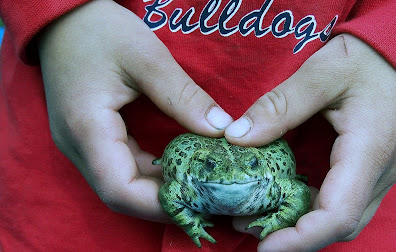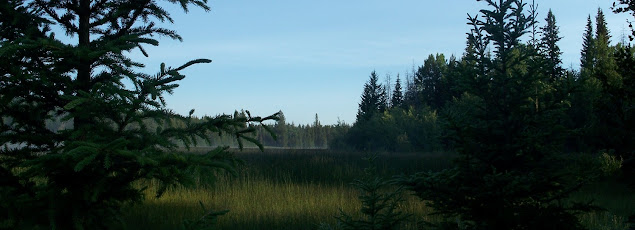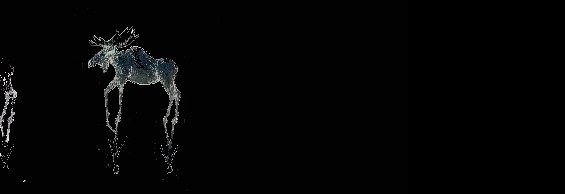Sunday, December 31, 2023
Saturday, August 5, 2023
Bushcraft and Survival Garden (updated)
We live in the bush and have created a garden that was unheard of in
these parts. In fact, the old timers thought we were crazy (26 years ago). Cultivating
wild flowers, greens and vegetables along with domestic greens and
vegetables. Enriching the soil with what is around us, starting apple trees, doing it all by
hand with the help from tools we've made. Simply. Leaving a light
footprint.
We live in the "working forest". Logging, ranching and mining. Consuming.
We call it bushcraft gardening. I suppose you could call it survival gardening because that is how we survive.
 |
| Our tree limb greenhouse. 150lbs of tomatoes |
Since we've been here the winter temperatures have gradually risen. We don't see a week or two of -30 or -40 anymore. When the cold began to move into our cabin anything on the floor froze.
It might get down there for a few nights now. We might get a week or two between -20...-28 with a -18 in there. Still cold but it's an easier way. How fragile we are.
.
We're more relaxed now. We still live in our 800 sq foot cabin. We would not live anywhere else.
Fruit trees have been difficult but now we have a small orchard. Between
moose, deer, bears, voles and mice it has been a challenge.
Honey bees have been emotionally draining because they die from causes we can't control. We don't raise them now. Instead we've been cultivating our relationship with wild bees. Every year there are fewer. This year we had bumble bees. The 5 or 6 species of wild bees usually pollinating our plants were missing.. We've been using a feather trying to pollinate.
Growing our own food has taught us about survival. In between frost, hail, bear, moose and deer, birds, rabbits, mice, voles, bugs, hillbilly pigs, the dreaded free range cattle and the government spraying herbicide over the forest we try to relax. The boreal forest is filled with animals that want almost everything that we grow.
He's a young adult now.
After a judo tournament he skyped us,
" My body is aching, my fingers and toes skinned
My face hurts to touch and I can't make fists due to ligament injuries
My spirit is unwavering
Looking forward to getting my Nidan and making knives".
This gardening method is sustainable, organic and has very little impact except birds, bugs, mice, snakes and worms have never had it better.
It's a state of mind going into the wilderness with nothing but seeds and a shovel, an open mind, relaxed and keenly observing your surroundings with a sense of freedom and balance.
 Everything
around you may have a use for your bush garden. Rocks act like sinks
storing heat energy from the sun that can offset cool nights. They are
fertilizers slowly giving important nutrients to the soil. They collect
and trap water. They can also be protection from animals and cover for
others, like toads.
Everything
around you may have a use for your bush garden. Rocks act like sinks
storing heat energy from the sun that can offset cool nights. They are
fertilizers slowly giving important nutrients to the soil. They collect
and trap water. They can also be protection from animals and cover for
others, like toads.That old stump – do I remove it, or can I plant a garden around it and let it slowly fertilize?
 |
| Rocks picked for a garden wall |
The fence is to keep out free range cows. For 26 years the free range livestock has been the greatest threat to our garden.
Rotten wood has got to be the supreme bush fertilizer adding organic material and fluffing up heavy soil.There are droppings from animals like deer, moose and rabbit which are good "on the spot" fertilizers.
Harvesting what you need with care and never taking more than 1/3 of anything.
Surviving with respect and again, with a light foot step

Fireweed shoots--Excellent greens
Cultivate dandelions, wild onions, wild parsnip, lambs quarters,
We've been fertilizing by mulching with green grass (before it goes to seed) covered with an inch of sand then covered with rotten wood. We have some chicken manure that we fertilize beans and greens with. After the crop is harvested plant rye grass or Chinese vegetables. When the thick head is 6 to 8 inches high we turn it over.
a young adult now learning about the city and people. The old timers are dead. It will be our 27th winter. Not much has changed here. We're older and still thriving in the bush. We wonder and ask ourselves.
Regards,
Aki and Scott
Our business, http://www.caribooblades.com/
Tuesday, April 18, 2023
Living with Energy from the Sun for 26 Years, what we have learned (update)
It almost feels like sun worship. Watching our garden grow, working,
feeding our electricity habit and staying healthy by the sun.
We live a low energy lifestyle and work in an isolated spot in
the interior of British Columbia. Getting away from the geopolitical mess or at least putting a bit of head space from the mess of corruption and manipulation.
We started with two 85 watt panels and
two golf cart batteries 25 years ago. Powered our 12 volt tv and a
light. Now we run 3 small, independant solar arrays.
The smallest is made up of a 75 watt panel fixed to our roof, facing south connected to a charge controller. The controller is connected to one 12 volt deep cycle battery. It powers a 12 volt light in the pantry, a 12 volt water pump from our well, a cd, tape player and radio.
A second system is made up of 4 panels (400 watts) mounted on a sun tracker 5 metres high that we built for less than $50. The panels are connected to a 40 amp controller that is connected to 4 x 6 volt deep cycle lead acid batteries. The batteries are connected to a 1750 watt inverter. The system is 20 years old. Two of the panels are 25 years old. The system runs electricity into our cabin and shop. It cost us $5000.
 |
| 500 watts of solar panel |
Sun trackers can provide a 45% increase in power.
We built this one 20 years ago. It has been modified since then to hold 4 panels vertically.
We
live and work here. The trackers are manual. We turn them directly on
the sun three or four times a day in the summer. Spring and fall, 2 or 3
times. In the winter they are static. Working with the sun. On dark
winter days we run a 3000 watt inverter generator for a few hours,
assuring everything stays rock hard in the freezer.
Besides lights, computers and the odd kitchen appliance, we power our shop. Our most demanding machine is the band saw with a 3/4 horse power motor.
What we have learned to get the most from your solar panels is:
charging batteries and relying on that stored power is not the way to go. Battery technology is inefficient. For us stored power is just enough for lights and computers when there is no sun. When the sun is out we'll work. From March until October we have unlimited power for our needs. We work full time with smaller machines (10 amps and less) when the sun is out. The bigger machines we use intermittently and because of our lighter wiring we run one 3/4 horse machine at a time.When the batteries are charged and there is a 60% sun day the process is a lot more efficient. Solar energy flows through the panels. The batteries act like a conduit. Energy the inefficient batteries will not accept on a full sun day is the energy we can use up.
After working in the shop,
at the end of a day the batteries have as much charge as they had at the
beginning of the day. If the day involved lots of heavy use, like using
the table saw ripping or milling apple wood with the band saw etc, all
over 15 amps, then we would alternate system. Keeping the batteries
charged.
 |
| Our shops |
This
power set up could be doubled, tripled, quadrupled... You would just
need more. Heavier wiring, more wattage (panels), larger capacity
controllers etc....
We help charge the batteries with a generator in the low sun months from November until the middle of February. We need to use a generator for machine power in the winter and on heavy load days in the early spring and fall. We slow our work right down in the winter. It works out.
Having two main systems that are interchangeable has proven to be a great asset in the low sun months. As one system is being used and discharges the other is charging.
4.6 billion years old. The sun will start a transformation into a red dwarf in 5 billion years. Swallowing the earth, Mars...
Consider, the sun provides enough power in one hour than the planet of people use in one year.
We are fortunate to live and work with the sun. A few panels and batteries have worked for us. What we've paid for our 1000 watt systems, today, you could buy 6 or 7 times as much power. A system of 5 or 6 thousand watts would pay for itself in 2 or 3 years if not sooner.
It
almost feels like sun worship. Watching our garden grow, working,
feeding our electricity habit and staying healthy by the sun. That is
the point. The sun. The most eye opening idea we've seen is the fact that the sun will supply everything human kind needs and more, it's staggering how much more,
Regards,
Aki and Scott














